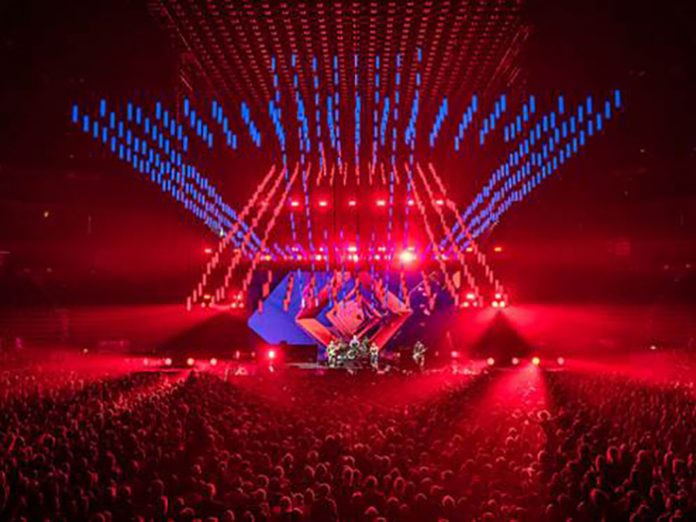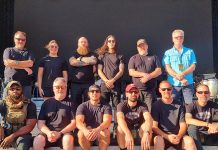After surpassing more than three decades on the road, the Red Hot Chili Peppers show no sign of slowing down. In fact, the band is doing just the opposite, as they wrapped up their four month European leg of The Getaway Tour and began their North American leg in San Antonio, Texas. With the largest kinetic light installation in touring history, they have lit the path for a new concert-goer experience.
On 1st September 2016, the Chili Peppers opened The Getaway Tour in Budapest, Hungary. The energetic, funk-rock band revealed a larger than life kinetic light installation that hung above the audience while they performed on stage. Fast-forward to 5th January 2017, they lit up North America, performing to another sold out crowd at the AT&T Center in San Antonio, TX. For the past few months, The Getaway Tour has trended on the internet.
The light installation, composed of over 800 TAIT Nano Winches, ascended and descended while changing colours and forming different patterns as the band rocked out on stage. The rhythmic lighting and diverse movements of the fixtures accompanied the bands lyrics and emotion, while videos streamed on a huge screen behind.
The elements of art, music and technology created an interactive, 3D experience that the Peppers and their team strived to ignite when first contemplating the show design. The team, which includes Production Manager Narci Martinez, Production Designer Scott Holthaus and Manager Peter Mensch of Q-Prime, immediately began searching for the latest in technology as their design concept strayed from standard lighting concepts and trusses. After numerous conversations and viewing the TAIT Nano Winch, the team determined that TAIT would be the provider of staging, automation, and the spectacular kinetic light installation. In a Youtube video, Holthaus shared that TAIT was chosen to manufacture the kinetic sculpture and be the automation provider, not only because of the long standing relationship, but because the packaging, postproduction and system integration was vital in setting up, breaking down and transporting the show in an easy, efficient and clean manner. “This whole system, including lights, is like twelve big pieces, it’s like a toy.” He continued: “it’s lots of big bits instead of lots of little bits.” Additionally, Holthaus explained that TAIT Navigator, the automation system operating the kinetic light sculpture, is the “brain and the mother” of the kinetic sculpture’s movement, and the cues can be created in many different programs including touch designer, catalyst or directly from the desk.






